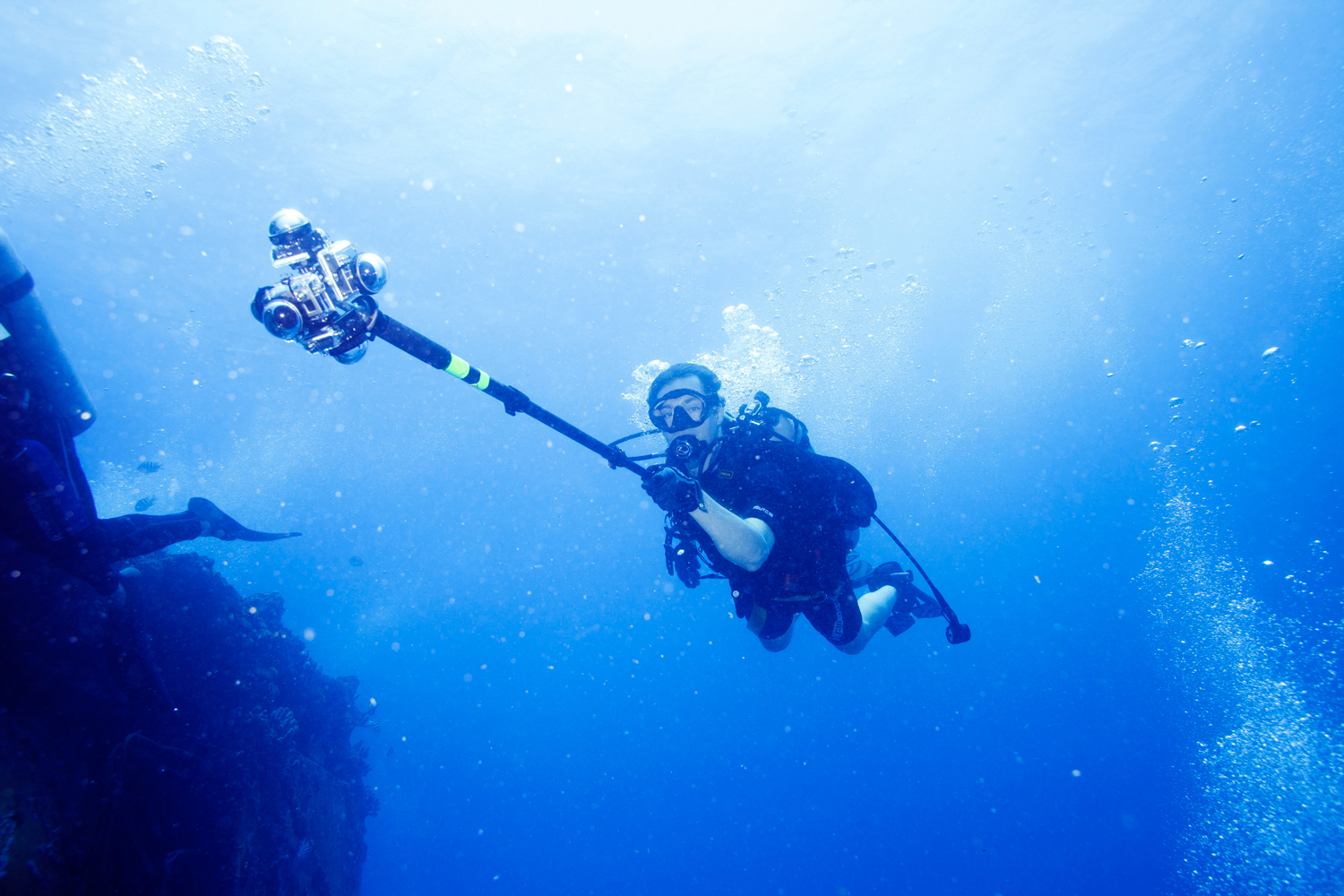
One of the many challenges of being a photo editor today is understanding your publication’s platforms — and identifying opportunities to try something visually exciting on them. When I found out, back in November 2013, that Fabien Cousteau planned to embark on a 31-day underwater mission on the world’s only habitable underwater science lab, I immediately wanted to take TIME’s readers on a dive around the coral-covered submersible.
But how could we make our audience feel like they were actually on a scuba dive? What would be the most immersive experience? An interactive 360-degree panoramic video seemed to be the answer. But with the project approved, a problem arose: how would we shoot that kind of video 60 feet below the ocean’s surface?
After much research and many phone calls, I came across a man called Michael Kintner, the founder and inventor of 360Heros, a company that makes one of the only 360-degree underwater video rigs. Kintner worked with us not only to train our cinematographers on how to shoot with the underwater rig while scuba diving, but also by stitching together the video and displaying the end product in an interactive player.
In the end, it took us three different shoots, with three different cinematographers, on three different days (due to low visibility and strong currents) to get the perfect continuous shot around Aquarius — followed by many more hours of video stitching, development work, and video editing. The result is Deep Dive, which you can explore here.
Below, TIME talks to Kintner about his 360Heros products and the making of our first underwater 360-degree video.
Mia Tramz: Tell us how you created the 360Heros line of products.
Michael Kintner: I had been flying helium blimps as part of my aerial photography company called AmazingAerialPhotos.com. Back in 2010 and 2011, I wanted to be able to take 360-degree photos from my blimp in one pass. In order for me to create these, I had rigged a remote control assembly on the bottom, so as soon as I flipped the trigger, it would rotate the camera, take a picture, rotate the camera, take a picture, and we could take spherical photos from the air.
At that time, I was using the [GoPro] Heros in a manual configuration and doing a partial 360 view. Then we were slicing the videos manually, synching up the cameras manually, and then using a batch routine to literally stitch all the photos together. It was really time consuming.
MT: And at what point did you make the decision to create your own product?
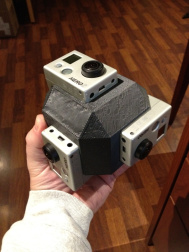
MK: I started researching 3D printers in 2011, and then I actually created my first model in November of 2011.
MT: You 3D-printed the first model?
MK: Yes. Matter of fact, all of my models are 3D-printed even today. They’re exclusively printed from 3D Systems at the moment, and we have future plans of doing injection mold, which is really close to being done.
We have eight different model types that we create now for filming a wide variety of sequences, whether it’s on the ground or below water. And the nice part about it is I can adapt the models as we learn. So if GoPro comes out with a brand new camera, within four days, based upon the engineering software that I wrote, I’ll have a brand new adapter for all of my rigs.
MT: With the underwater rig and the other products, what was the biggest road bump you hit while you were developing these products?
MK: The biggest road bump was the underwater 360 video. GoPro cameras are awesome cameras. I mean, it’s amazing the power that you have in that little housing. But the problem is when the camera is out of water, you have a field-of-view of around 170 degrees. You take that same camera underwater and the field-of-view changes to 130 degrees. So you lose 40 degrees field-of-view, and as soon as you do that, you can no longer stitch [the images together] because you don’t have enough data.
The challenge was to create a dome (patent pending) that I could snap onto the GoPro cameras to restore that field-of-view underwater.
MT: How did you go about creating that dome?
MK: It was all done right here at the house, and I experimented bending polycarbonate to try to find the right angles.
MT: And then did you have to find a manufacturer for the domes?
MK: Yeah. There are basically three different manufacturing companies that [can] create those snap-on domes. And that’s where I met Bill Fuger from Snake River Prototyping, and we got to be great friends. We partnered on the dome side of the concept… The challenge with your project is that the field-of-view is lost underwater, so you’re really trying to restore it back. And you can’t do it with clear lenses, you need to have the cyan filter to get the color right underwater. That was another challenge. The first time we tested it [was] with clear water in a pool, and it worked great. But as soon as I dropped it into the ocean I lost all my color. So I worked with a local dives shop here [WHERE?] in town, Jerry Cummins from J&D Scuba, who was my advanced dive instructor, and we put together the first model. He actually went to Belize, and I trained him on how to properly hold it, and that’s where we shot our first successful underwater footage.
MT: What did that feel like when you guys finally got that in the can?
MK: Yahoo! [Laughter] It was like “Holy sugar! I can’t believe it works!” So we’ve had all sorts of people contact us. Google has talked to us about doing 360 video underwater and charting all of the underwater territory. And what’s really exciting about what we’ve done for TIME is that we’re using our newest software, our newest configuration, and it’s really coming together. I mean, compared to where we started to where we are now, it’s a huge leap.
MT: Is 360Heros officially affiliated with GoPro?
MK: We’re not. We’re just a very proud user.
MT: When I pitched the idea for 360 underwater video back in November 2013, I did it without really doing any research into how we would shoot it, which, you know, in hindsight was probably not a great idea. I was surprised when we started looking into what technology to use to find that your product was one of only two underwater 360 video rigs on the market — and that yours was much more developed. Why do you think that is?
MK: Right now, the one thing that’s made it all possible is the GoPro camera. The second thing is we’ve spent the time to research and engineer the domes in order to allow that to happen for the least amount of cameras, which is extremely critical. And then the other thing is that we don’t require any computer hooked to it… You just snap the cameras into their housings, and they’re protected. What we want to do now is train and teach people on how to do it and do it easily.
MT: What kind of advice would you give to young entrepreneurs or inventors who want to get into business for themselves in the fields of video or photography?
MK: My advice is to strive to make it perfect. Don’t give up that type of mentality. I always want to break the barrier and try to do something that’s never been done before. And that’s what’s so cool.
For example, a company called Everest Media Productions hired us to do their first 360 video on top of Mount Everest. There were huge challenges. I said, “I don’t know how this thing is going to handle at minus-55-degrees. It’s probably going to break.” You try to figure out how this all works, and your wife kind-of goes crazy when you empty out the freezer and put all the food in the refrigerator, and throw all [the camera] holders in the freezers. It’s that type of experimenting which is fun. And when you receive a Guinness Book of World Records award that you never expected, that’s really exciting.
MT: Well, thank you so much, Mike, both for the interview and for everything you’ve done with this project. We really appreciate it.
This interview has been edited for length and clarity
Michael Kintner is the CEO/Founder of 360Heros and a recent Guinness Book of World Records inductee for the first fully spherical HD 360 video filmed on the summit of Mount Everest using the 360Heros 360 video gear.
Mia Tramz is an Associate Photo Editor for TIME.com. Follow her on Twitter @miatramz.
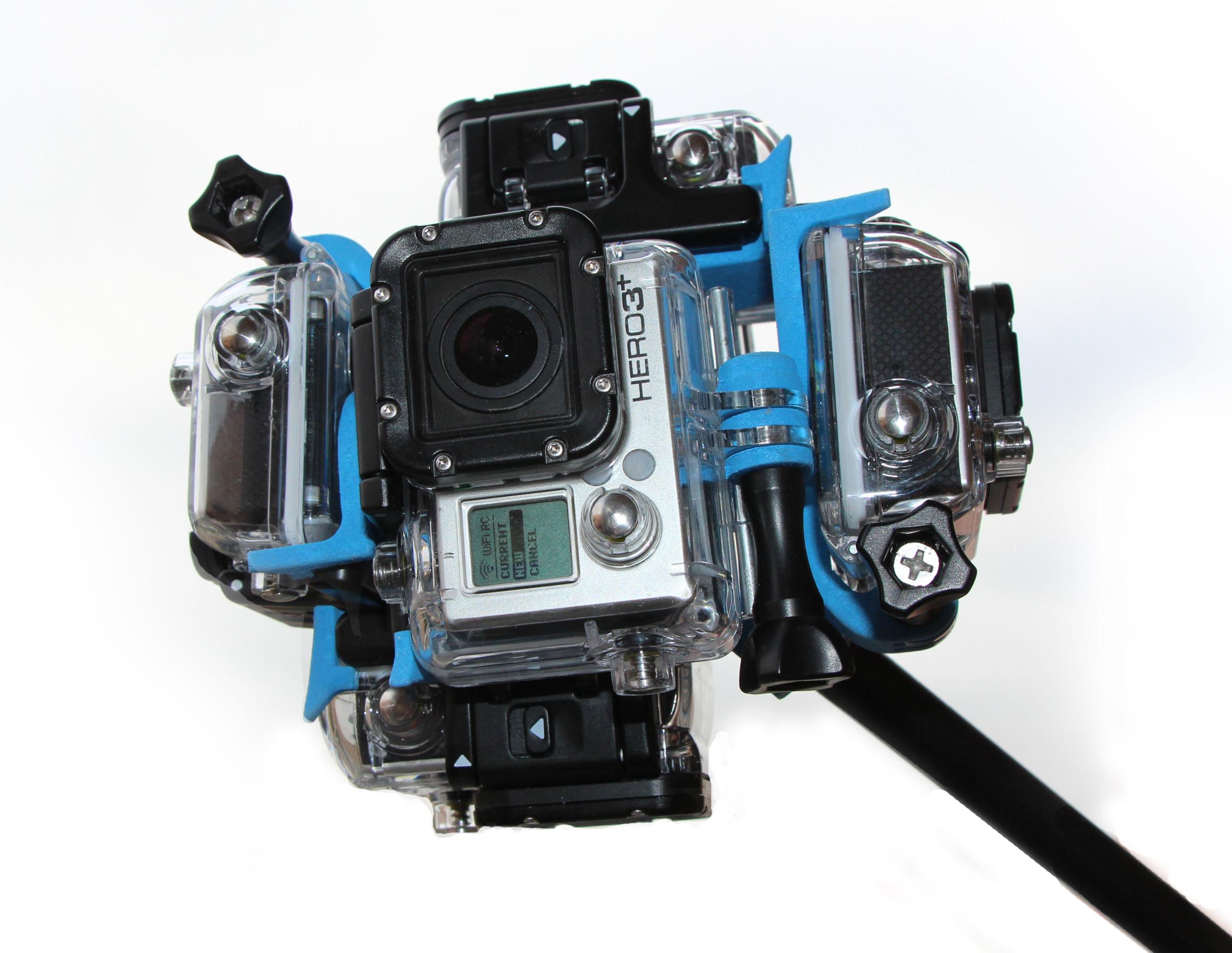
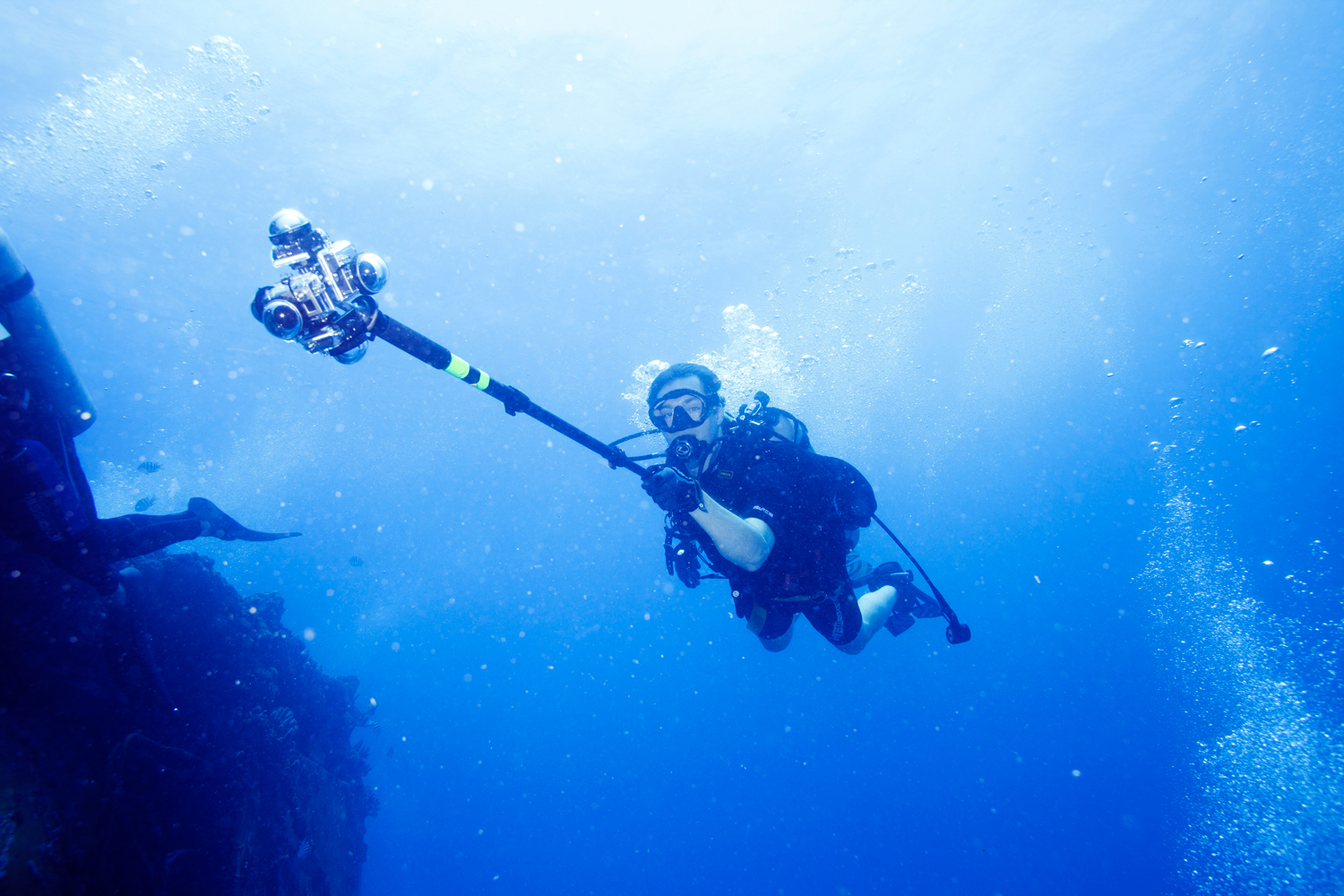
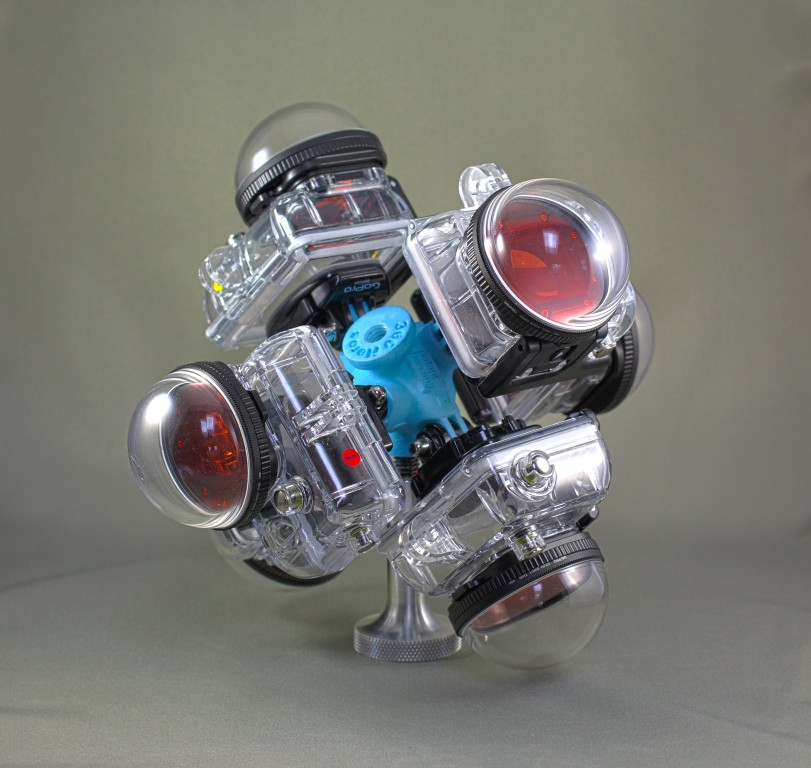
More Must-Reads from TIME
- Donald Trump Is TIME's 2024 Person of the Year
- TIME’s Top 10 Photos of 2024
- Why Gen Z Is Drinking Less
- The Best Movies About Cooking
- Why Is Anxiety Worse at Night?
- A Head-to-Toe Guide to Treating Dry Skin
- Why Street Cats Are Taking Over Urban Neighborhoods
- Column: Jimmy Carter’s Global Legacy Was Moral Clarity
Write to Mia Tramz at mia.tramz@time.com